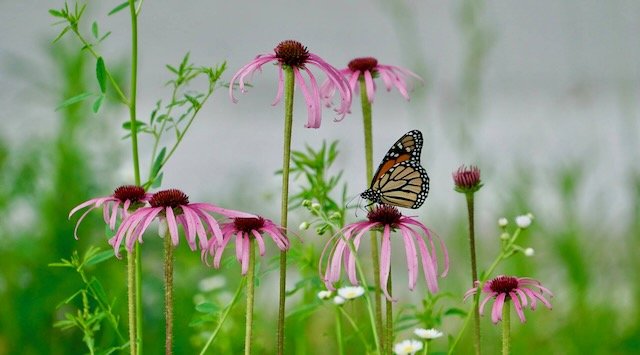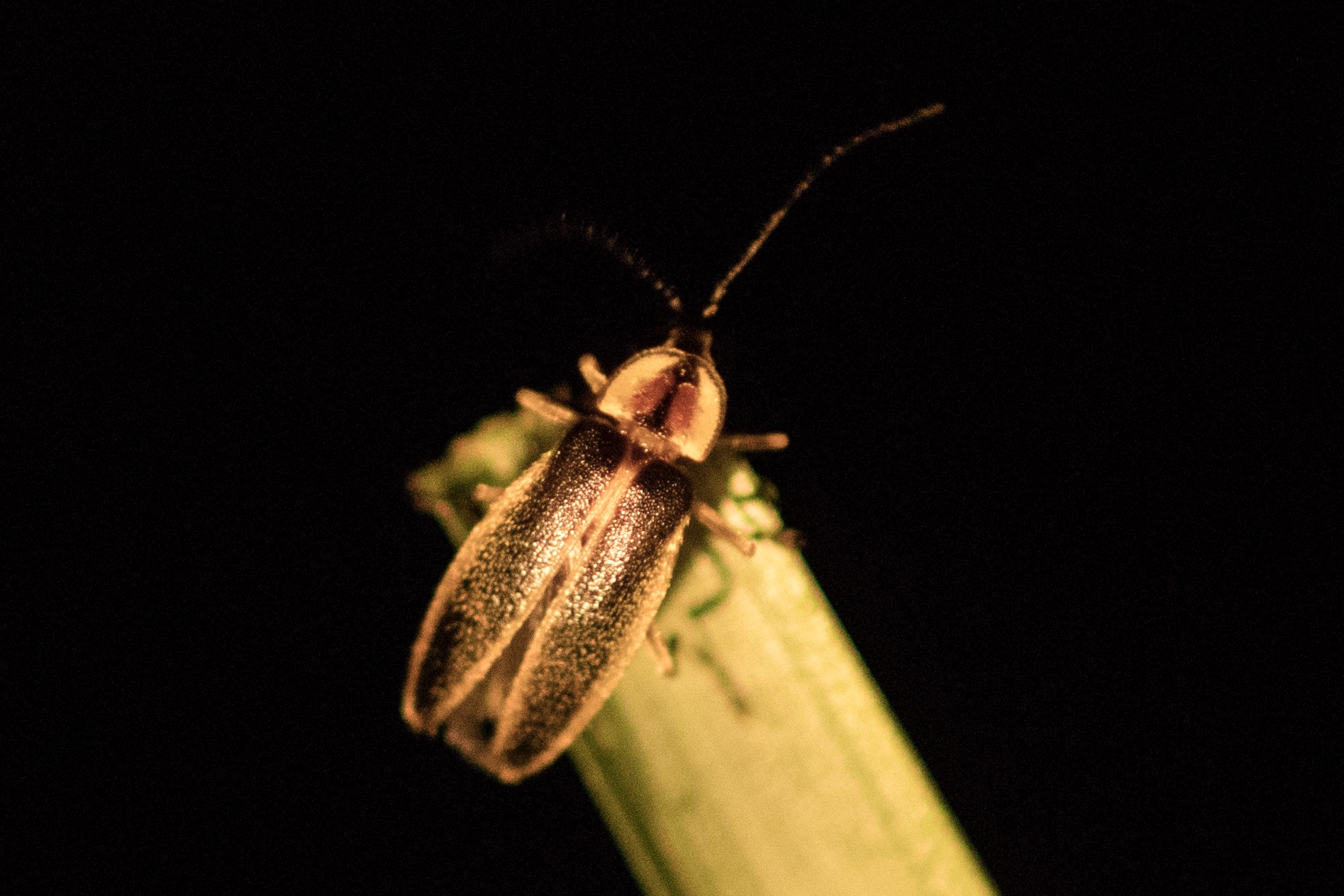A Naturalist Voice
Field Notes by J. Cantrell, Photos courtesy of Kevin Mouser
Oh, how often a patio becomes a home base in June and July? Mom and dad, perhaps grandparents and other family and friends collectively become the lawn-chaired audience. They look on from the home base to their youth running around in the night’s margin of darkness around the dwelling. The dark they escape to surrounds the halo of light shining from the porch lights above the spectators.
The real captivating drama for kids and the on-lookers is a sort of light show. However, this is a different type of “fireworks” bordering our Independence Day holiday than the pyrotechnics variety. These evening events are hosted by six-legged performers and I think they deserve a two-handed applause. The firefly or lightning bug species belong to the beetle order, specifically the family of Lampyridae. There are over 2,000 types inhabiting humid areas of temperate and tropical regions worldwide. Each species has its own sequences and patterns of blinking. Naturalists may pick out different ones by seeing some with quick strobe-like flashes while others appear to be a well-lit wand waving slowly in the air. The pulses of light are utilized to attract a mate, sometimes defend a territory or a few mimic the code of another in order to capture and eat a pulsing neighbor. Children too are often mesmerized and attracted to the blinking beetles. Kids discover the beetles by scouting the backyard during the nocturnal shift and they simply find themselves walking toward the light. The youngsters approach the lightning bugs with paper cups or some type of vessel in hand. Their collection container quickly becomes a lantern as more and more fireflies are captives. Only the adult firefly insects blink, their larvae and pupae glow but lack the blinking ability thus “glow worms” are spotted on the ground. Their abdomen has special cells making up a “light organ” and this is where bioluminescence (a chemical reaction with oxygen) takes place.
All native life, whether plants, insects, fish or mammals, are important to our world. They all serve many functions interacting with each other and their specific habitat, and lightning bugs are no different. Lightning bugs (fireflies) are important little predators in our yards. The larva is a voracious eater of small invertebrates. Adults may feed on flower and leaf mites, smaller beetles and true bugs. While all native lifeforms are essential for our ecosystem, these little neighbors provide entertainment for us too. Comparable to June & July’s night sky of twinkling stars, the fireflies seal our childhood memories, catch our attention and set our imagination soaring…no wonder we find ourselves walking toward the light. Fun Stuff!
Jeff Cantrell is a conservation/outdoor educator serving the southwest corner of Missouri. He may be reached at jeff.cantrell@mdc.mo.gov
Families interested in a program on the “Magical Fireflies” may call the Joplin Conservation Dept (Shoal Creek Conservation Education Center) and inquire about the free class on Thursday, June 20th, 7 – 9 pm. 417-629-3434


